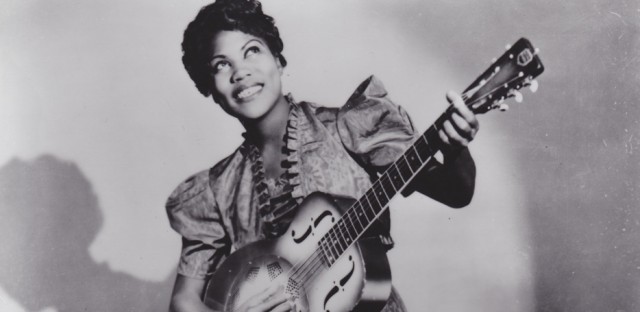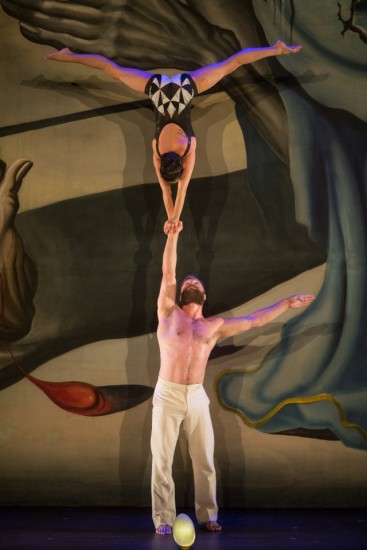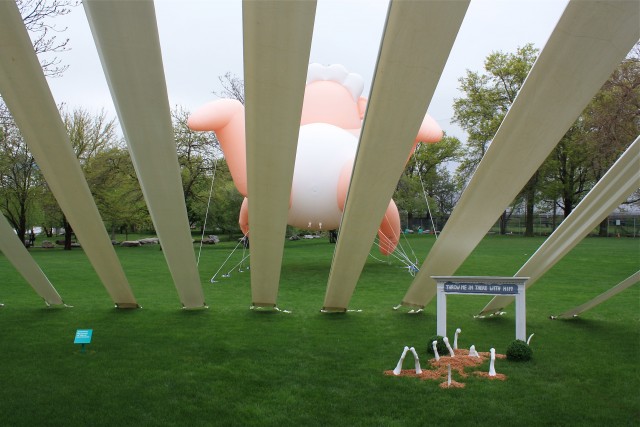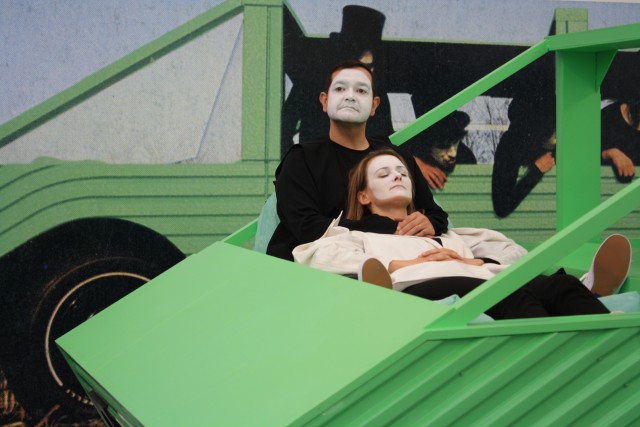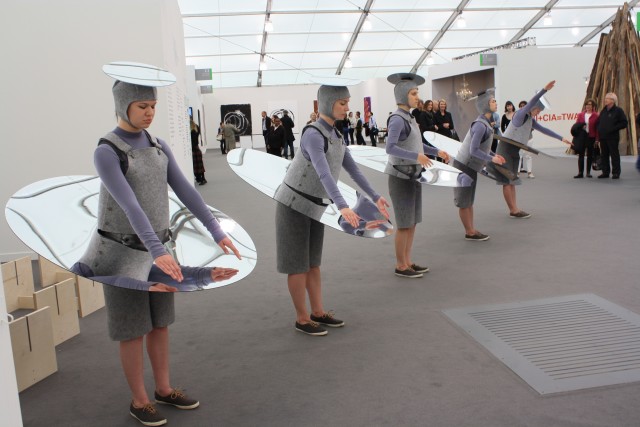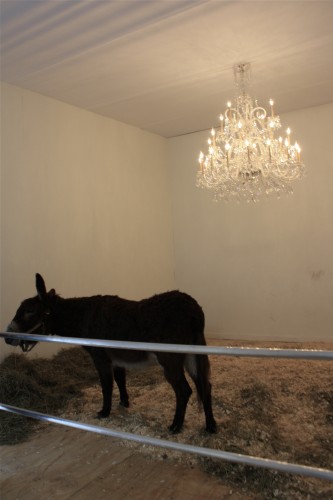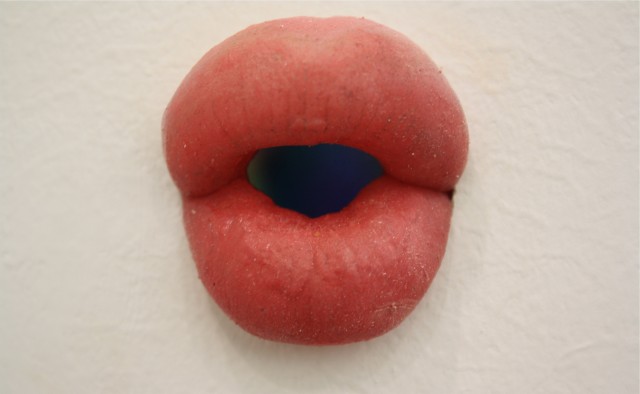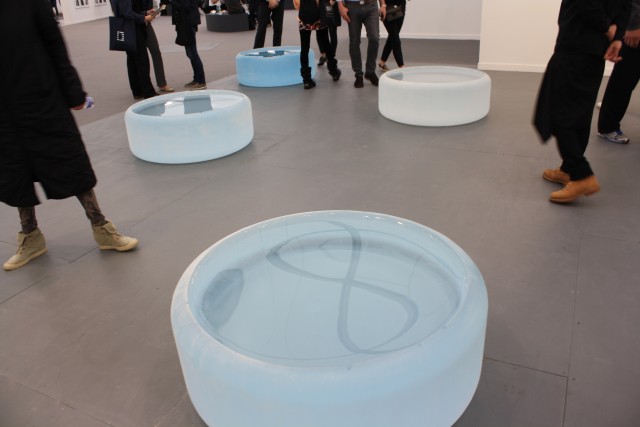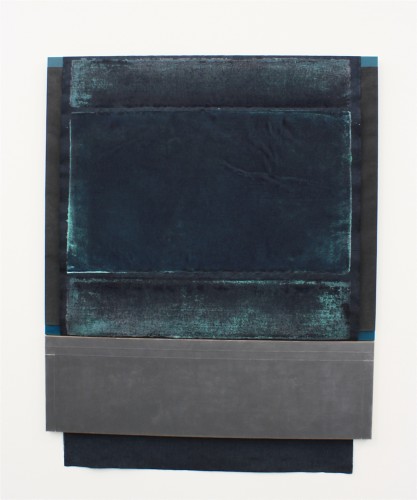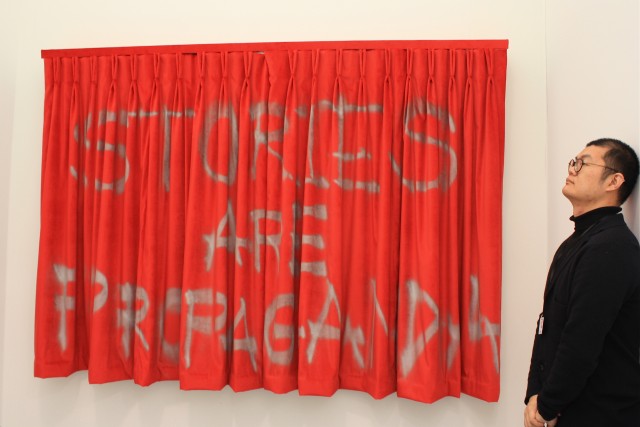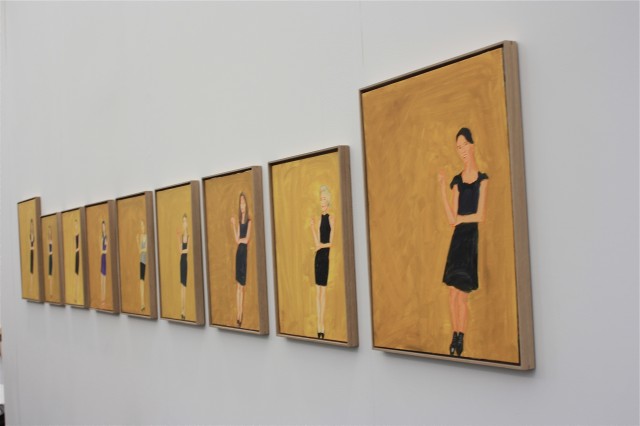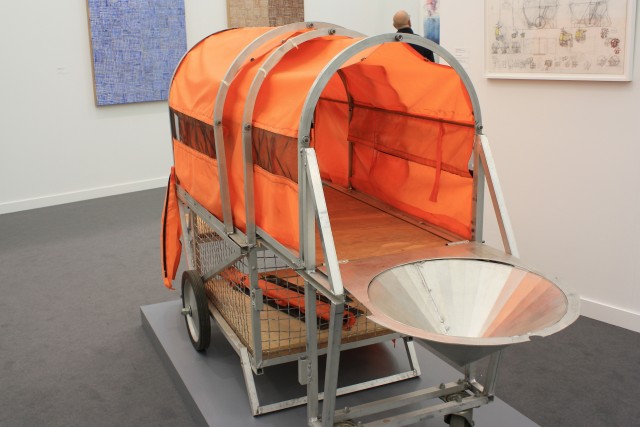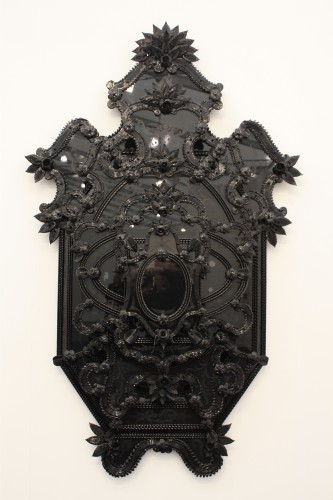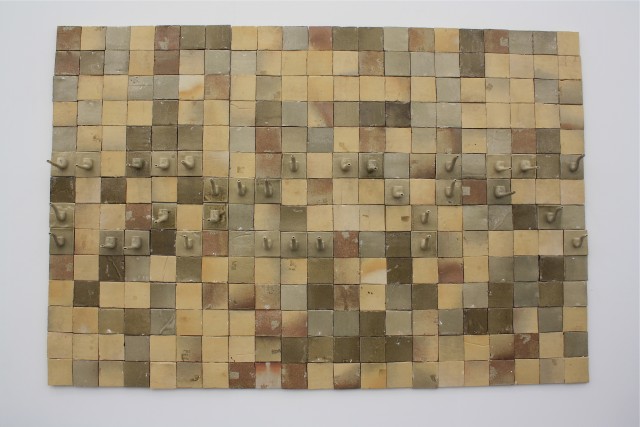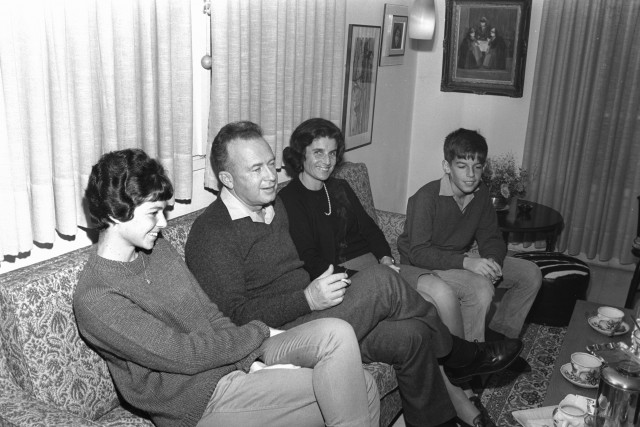
Marie Lorenz will be offering free trips along the Hudson River with handcrafted canoes stored under the High Line at Gansevoort St. (photo by twi-ny/mdr)
Who: Marie Lorenz
What: Rowboat trips along the Hudson River as part of “Wanderlust” exhibit on the High Line
Where: Village Community Boathouse, Pier 40, 353 West St. at West Houston St.
When: May 26, June 4 & 23, August 25, free, multiple times
Why: At the 2014 Frieze Art Fair, we found a unique way to get back to Manhattan from Randall’s Island: We took a rowboat ride organized by environmental artist Marie Lorenz across the East River to Harlem. Lorenz began her “Tide and Current Taxi” project back in 2005, giving free rides around the city’s waterways while documenting them on video. Lorenz is now offering rides along the Hudson as part of the latest High Line exhibition, “Wanderlust,” which celebrates the High Line as an ambulatory space. Three of the rowboats can be seen underneath the Gansevoort end of the High Line; on May 26, June 4, June 23, and August 25, Lorenz will lower one of the boats and take lucky passengers on trips of between twenty and forty minutes, depending on the weather, the tide, and other factors. The ride is free, but you must sign up in advance, and quick, because many of the time slots are already booked. We had a great time on our trip with Lorenz two years ago, so don’t hesitate to catch a ride on this amazing journey. “Wanderlust” continues through March 2017 and also includes works by Tony Matelli, Giorgio Andreotta Calò, Valentin Carron, Iman Issa, Matt Johnson, Paulo Nazareth, Mike Nelson, Roman Ondak, Susan Philipsz, and Rayyane Tabet.
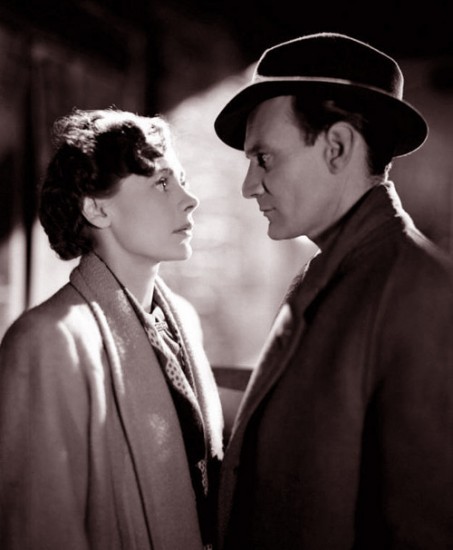
 “Don’t hurry. I’m perfectly happy,” Laura Jesson (Celia Johnson) tells her rather boring husband, Fred (Cyril Raymond), as he returns to his crossword puzzle one night. “How can I possibly say that?” she then thinks to herself. “‘Don’t hurry. I’m perfectly happy.’ If only it were true. Not, I suppose, that anybody’s ever perfectly happy, really. But just to be ordinarily contented, to be at peace. It’s such a little while ago really but it seems an eternity since that train went out of the station, taking him away into the darkness. I was happy then.” In David Lean’s Brief Encounter, one of the greatest romantic films ever made, Laura, a housewife and mother, can’t stop herself from falling for dapper doctor Alec Harvey (Trevor Howard), who is also married. As they explore a potential physical relationship, Laura is wracked with guilt, especially as she keeps bumping into nosy gossip Myrtle Bagot (Joyce Carey). But the two potential lovers are so drawn to each other, filling the holes in each other’s lives, that they consider risking all they have for just one more moment together. Winner of the 1946 Palme d’Or at Cannes, Brief Encounter is told in flashback in Laura’s voice as she goes over every wonderful and terrifying detail in her mind while contemplating whether to spill the beans to the generally oblivious Fred. Written by Noël Coward based on his 1936 one-act play, Still Life, the film features terrifically subtle performances by Johnson and Howard as the daring couple; you can’t help but root for them, despite the possible consequences. Lean, who earned the first of his seven Best Director Oscar nominations for the heartbreaking film, keeps things relatively, well, lean, getting right to the point in less than ninety minutes; he would go on to helm such sprawling epics as The Bridge on the River Kwai, Lawrence of Arabia, Doctor Zhivago, and A Passage to India before his death in 1991 at the age of eighty-three. Brief Encounter is screening May 15 and 16 in Film Forum’s one-week, thirteen-film tribute to the one and only Coward, consisting of movies he wrote, appeared in, or were based on his writing, from such beloved classics as Blithe Spirit, Private Lives, and Cavalcade to such lesser-known fare as The Astonished Heart, Tonight Is Ours, and Boom!
“Don’t hurry. I’m perfectly happy,” Laura Jesson (Celia Johnson) tells her rather boring husband, Fred (Cyril Raymond), as he returns to his crossword puzzle one night. “How can I possibly say that?” she then thinks to herself. “‘Don’t hurry. I’m perfectly happy.’ If only it were true. Not, I suppose, that anybody’s ever perfectly happy, really. But just to be ordinarily contented, to be at peace. It’s such a little while ago really but it seems an eternity since that train went out of the station, taking him away into the darkness. I was happy then.” In David Lean’s Brief Encounter, one of the greatest romantic films ever made, Laura, a housewife and mother, can’t stop herself from falling for dapper doctor Alec Harvey (Trevor Howard), who is also married. As they explore a potential physical relationship, Laura is wracked with guilt, especially as she keeps bumping into nosy gossip Myrtle Bagot (Joyce Carey). But the two potential lovers are so drawn to each other, filling the holes in each other’s lives, that they consider risking all they have for just one more moment together. Winner of the 1946 Palme d’Or at Cannes, Brief Encounter is told in flashback in Laura’s voice as she goes over every wonderful and terrifying detail in her mind while contemplating whether to spill the beans to the generally oblivious Fred. Written by Noël Coward based on his 1936 one-act play, Still Life, the film features terrifically subtle performances by Johnson and Howard as the daring couple; you can’t help but root for them, despite the possible consequences. Lean, who earned the first of his seven Best Director Oscar nominations for the heartbreaking film, keeps things relatively, well, lean, getting right to the point in less than ninety minutes; he would go on to helm such sprawling epics as The Bridge on the River Kwai, Lawrence of Arabia, Doctor Zhivago, and A Passage to India before his death in 1991 at the age of eighty-three. Brief Encounter is screening May 15 and 16 in Film Forum’s one-week, thirteen-film tribute to the one and only Coward, consisting of movies he wrote, appeared in, or were based on his writing, from such beloved classics as Blithe Spirit, Private Lives, and Cavalcade to such lesser-known fare as The Astonished Heart, Tonight Is Ours, and Boom!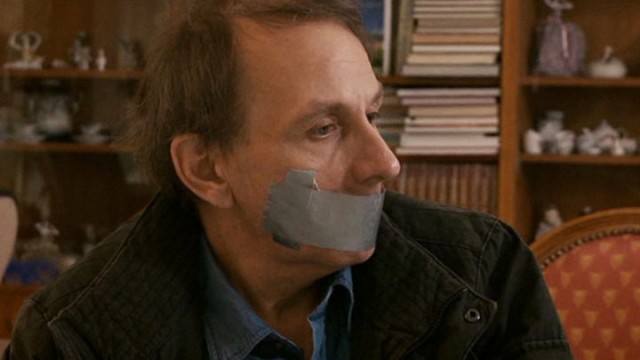
 In 2010, French writer, actor, poet, and filmmaker Michel Houellebecq won the prestigious Prix Goncourt for his novel The Map and the Territory. The controversial Houellebecq — who has been accused of plagiarism, misogyny, and inciting racial hatred — then went missing in 2011, failing to show up for a book tour in Belgium and the Netherlands. As it turns out, the novelist merely forgot about the readings and claims he was unreachable at the time, by either phone or e-mail. But writer-director Guillaume Nicloux tells a far more entertaining story in the absurdist black comedy The Kidnapping of Michel Houellebecq, which imagines that he really was taken hostage and held for a never-specified ransom. Even better, Nicloux got Houellebecq to play himself in the film, spoofing his image as an intellectual recluse. The fictionalized Houellebecq is taken captive by Mathieu (Mathieu Nicourt), Max (Maxime Lefrançois), and Luc (Luc Schwarz), who eventually bring him to a country house owned by elderly couple Ginette (Ginette Suchotzky) and Dede (Andre Suchotzky), where Houellebecq is almost always handcuffed and chained to his bed at night. His kidnappers engage him in literary discussions, talk about bodybuilding, bring him books to read, drink wine and smoke cigarettes with him, and even procure female accompaniment (Marie Bourjala) when he asks for it. The real Houellebecq (Platform; H. P. Lovecraft: Against the World, Against Life) plays his fictionalized self with a deadpan comic turn worthy of Buster Keaton, never letting on whether anything that is happening is even the slightest bit true to who Houellebecq actually is. Nicloux (The Nun, Valley of Love) keeps the audience guessing all the way about the characters and their motives, but don’t expect any simple answers or trite resolutions. The Kidnapping of Michel Houellebecq is screening May 10 at 4:00 and 7:30 in FIAF’s “Creative Encounters” CinéSalon series, with the later show introduced by Albertine Books deputy director Tom Roberge, who has admitted to his
In 2010, French writer, actor, poet, and filmmaker Michel Houellebecq won the prestigious Prix Goncourt for his novel The Map and the Territory. The controversial Houellebecq — who has been accused of plagiarism, misogyny, and inciting racial hatred — then went missing in 2011, failing to show up for a book tour in Belgium and the Netherlands. As it turns out, the novelist merely forgot about the readings and claims he was unreachable at the time, by either phone or e-mail. But writer-director Guillaume Nicloux tells a far more entertaining story in the absurdist black comedy The Kidnapping of Michel Houellebecq, which imagines that he really was taken hostage and held for a never-specified ransom. Even better, Nicloux got Houellebecq to play himself in the film, spoofing his image as an intellectual recluse. The fictionalized Houellebecq is taken captive by Mathieu (Mathieu Nicourt), Max (Maxime Lefrançois), and Luc (Luc Schwarz), who eventually bring him to a country house owned by elderly couple Ginette (Ginette Suchotzky) and Dede (Andre Suchotzky), where Houellebecq is almost always handcuffed and chained to his bed at night. His kidnappers engage him in literary discussions, talk about bodybuilding, bring him books to read, drink wine and smoke cigarettes with him, and even procure female accompaniment (Marie Bourjala) when he asks for it. The real Houellebecq (Platform; H. P. Lovecraft: Against the World, Against Life) plays his fictionalized self with a deadpan comic turn worthy of Buster Keaton, never letting on whether anything that is happening is even the slightest bit true to who Houellebecq actually is. Nicloux (The Nun, Valley of Love) keeps the audience guessing all the way about the characters and their motives, but don’t expect any simple answers or trite resolutions. The Kidnapping of Michel Houellebecq is screening May 10 at 4:00 and 7:30 in FIAF’s “Creative Encounters” CinéSalon series, with the later show introduced by Albertine Books deputy director Tom Roberge, who has admitted to his 